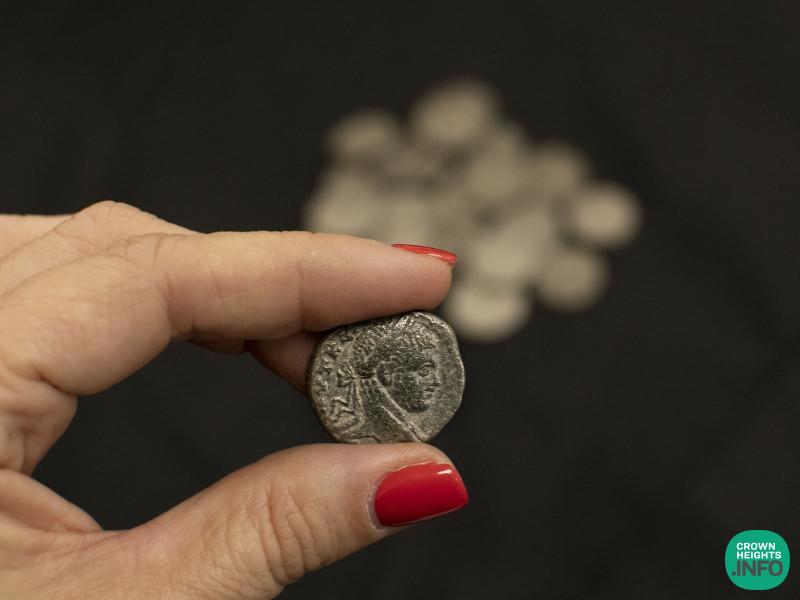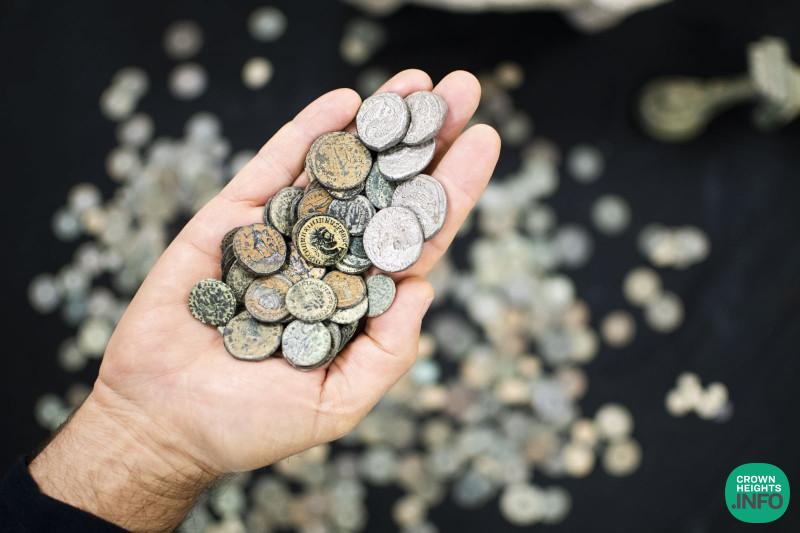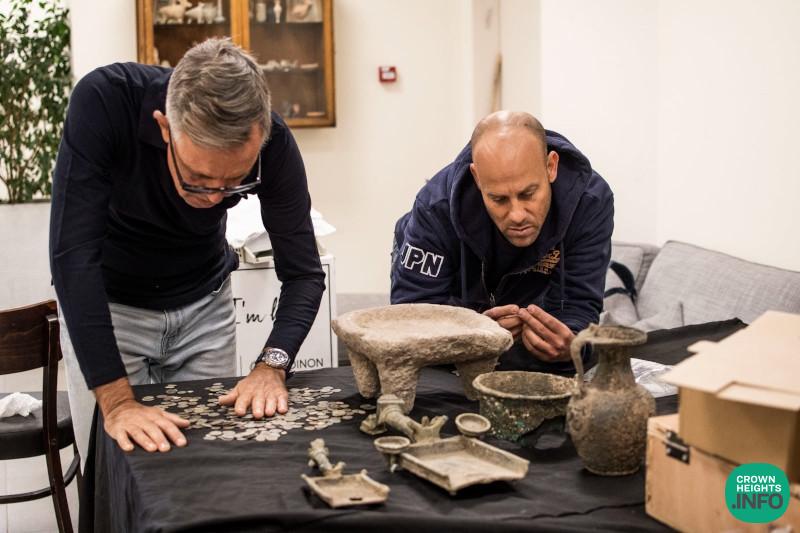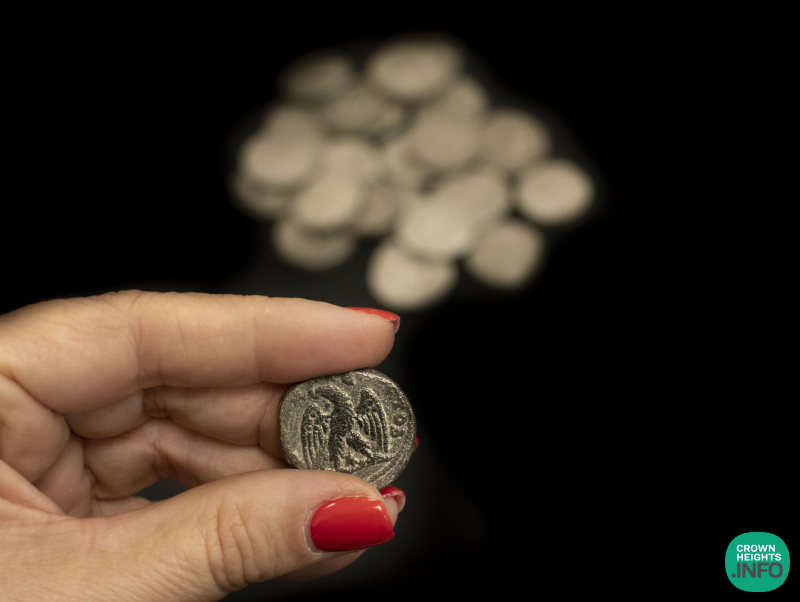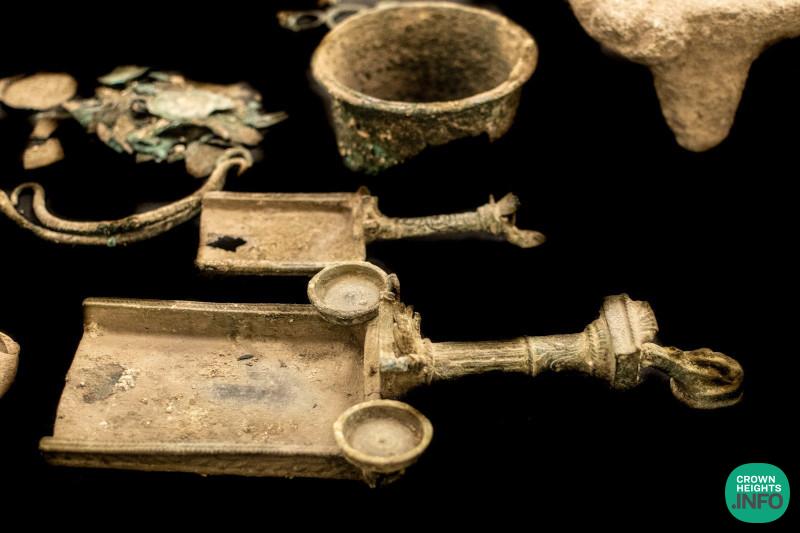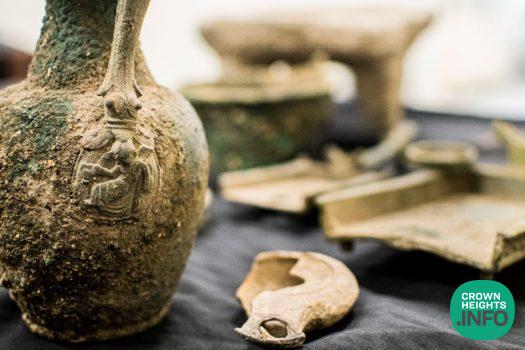
Antique Finds In Israel May Date From Bar Koschba Revolt
What were ornamental bronze incense burners and a wine server doing in a tunnel complex dating from the Bar Kokhba Revolt in the Judean foothills?
Israel Antiquities Authority investigators suspect that the remarkable archaeological finds seized by Lev HaBira police from antiquities dealers last week are battle spoils captured from Roman soldiers by Jewish rebels in the Second Jewish Revolt.
On routine patrol in the Musrara neighborhood last week, detectives from the Lev HaBira police station in Jerusalem noticed a vehicle driving in the wrong direction up a one-way street. The vehicle looked suspicious, so the detectives stopped and searched it. They were amazed to find a box containing unusual archaeological finds in the trunk.
Inspectors from the Israel Antiquities Authority’s Antiquities Robbery Prevention Unit were called to the police station and immediately realized that the remarkably well-preserved finds date from the Roman period. The finds include two ornate 2,000-year-old bronze censers, used to burn ritual incense, and probably belonged to affluent Roman houses and temples. A bronze jug for serving wine was also recovered. The vessel bears a depiction of a Roman banqueting scene showing a reclining figure holding a jug of wine. Other illicit finds include:
An ornate stone tripod bowl.
Roman ceramic lamps.
Hundreds of coins dating from the Middle Roman period (second–third centuries CE).
Bronze artifacts are relatively rare finds in Israel, as metal was an expensive commodity and was usually melted down for reuse. Such finds are generally recovered from archaeological sites where they were deliberately concealed, or in tunnel complexes left after being taken in battle during the Bar Kokhba Revolt.
The discovery of the finds prompted the Israel Antiquities Authority to launch a criminal investigation against the three suspects from the vehicle. The inquiry reinforced suspicions that the items were brought to Jerusalem to be sold to an antiquities dealer. The Robbery Prevention Unit believes that the ancient items were taken from a tunnel complex dating from the Second Jewish Revolt that has been under surveillance in recent months.
The unit explains that the items were spoils seized by Bar Kokhba rebels, but the Jewish fighters did not use them since they are typical Roman cult artifacts and are decorated with figures and pagan symbols (thus violating the Jewish prohibition of idolatry). Furthermore, by the time of the Bar Kokhba Revolt, the Second Temple in Jerusalem had been destroyed, and the Jewish rites of offering sacrifices and burning incense were no longer practiced. If the Jewish fighters wanted to use such artifacts, they would deface the figures to prevent idolatry.
Photo: Yoli Schwartz, Israel Antiquities Authority
